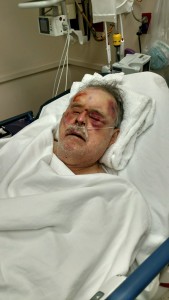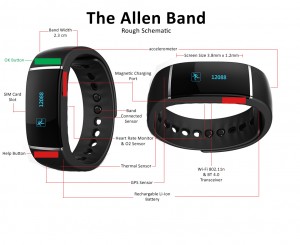Schrock Moves its Lincoln, NE Computer Repair Service Center Today!
- Comments: 0
- Written on: July 10th, 2021
Schrock Innovations is moving the majority of the contents from our old Service Center to our new location. So if you are in need of a computer repair in Lincoln you can find us at our new address is: 7501 S 15th Street, Suite G Lincoln, NE – 68512.
This new location is more conveniently located than the previous one.
Thankfully we moved a lot of our excess inventory yesterday, as well as our new servers, rack, bench displays, and some of the lesser used data recovery equipment. We also had all of our phone and data cabling installed as well as our ambient sound system. Today we finish moving everything and tomorrow the phones and data change over.
While we will be live in the new space tomorrow, our grand opening will not be for another week or two. There is still a lot of work to get done, and we are all tired and sore but man is it worth it!
The Allen Band Idea Becomes Reality
- Comments: 0
- Written on: May 13th, 2015
 If you listen to my radio shows or watch the TV segments I do, you have probably heard me talk about the fall that my dad took at home back in March.
If you listen to my radio shows or watch the TV segments I do, you have probably heard me talk about the fall that my dad took at home back in March.
Allen had a slow motion fall from a chair in the kitchen. He hit his head on the wall and lost consciousness. when he woke up he was bleeding from his knees, head, mouth, and elbow. He couldn’t get up move or talk. His arms were asleep from laying on them for about 24 hours.
I was surprised to learn that when people over the age of 65 fall and remain immobile, their muscles begin rapidly breaking down after the first hour. The condition is called Rhabdomyolysis and it can be deadly as the kidneys shut down from being poisoned by disintegrating muscle tissue.
My dad was able to take care of himself at home before the fall and afterward I was helping him eat and watching occupational therapists help him learn to talk and swallow again. After the fall, he lost over 50% of his body’s muscle mass and fine motor control. I started playing the “what if” game in my head wondering what I could have done to prevent this.
Would a Life Alert Pendant Have Helped?
The short answer is no, it wouldn’t have. His fall was too slow to be detected by any accelerometer-based fall detection system. When he woke up on the floor he wouldn’t have been able to push a button.
I thought there must be some technology that could have detected he was in trouble and alerted someone to help him more quickly. If I could have found him in 4 or 5 hours the damage would have been so much less severe.
The short answer is there is nothing available now that could have detected his situation and called for help. I decided in that moment I was going to change that.
The Allen Band Idea
The idea for the Allen Band is basically that if we can measure motion with devices like the FitBit, why doesn’t anyone measure the lack of motion? It is unusual for even a senior citizen to stay immobile for 4 or more hours at a time.
There are all kinds of wearables that measure all sorts of biometric data, but no one is looking for the LACK of data as an indicator there could be a problem. If my dad would have been wearing a device like the Allen Band, it would have texted me that he might be in trouble. I could have called him. He wouldn’t have answered, which would have been strange for him. I could have gone to his house hours earlier and prevented a lot of the muscle tissue damage.
My idea was to couple heart rate monitoring, body temperature monitoring and inactivity monitoring into a device that could send a message if something was wrong. That’s way too much programming to put into a simple wearable, so some kind of monitoring station was needed. I don’t have any desire to open a Life Alert-style call monitoring center, so I started to wonder if we could monitor the Allen Band with a cloud server and simply send alerts form the server to family members when an “event” was detected.
In fact, by using a computer in place of the call center I found that we could actually monitor the bands for free. The server costs are that inexpensive.
More Support Than I Could Have Imagined
As I investigated the idea, I found that many seniors don’t subscribe to devices like Life Alert because the $41.95/month monitoring cost is too expensive.
I reached out to a few factories and development companies and learned that all of the technology I needed was readily available. Sprint and other cell carriers offered to make specially priced monitoring plans at $10/month to support the new device.
I have received phone calls and emails offering personal help, financial backing, and over 170 commitments to purchase the Allen Band once it is available.
Moving Forward to Prototype
Given all of the encouragement, I started approaching factories to determine the cost and timeline of building a prototype. Specifically I was looking for:
- A reputable factory with experience in wearables
- Reasonable prototype costs
- Briefest time from design to prototype
- Ability to create an initial batch of 1,000 devices in a reasonable time frame
I narrowed the list to three factories. Of those three one stood out as the best in all categories. Their prototype cost was $22,500 with a six-eight month development timeline. After that, they needed 30 days to construct 1,000 units.
Gearing up for a Kickstarter Campaign
We are currently working on a much more technical drawing of the Allen Band to begin the prototype process. We are planning on launching a Kickstarter campaign to crowd-fund the prototype cost, and we could really use your help.
First, if this project resonates with you, please visit The Allen Band Facebook page, like it and share it with your friends. When you like the Facebook page you will get to see all of the development milestones and stay up to speed with the project.
Secondly, when we launch our Kickstarter campaign we need as many backers as possible on day 1. You can back the Allen Band for as little as $10 or as much as $1,000. There will be rewards for backers on every level, but the biggest reward will be developing a product that can help save lives, improve quality of life, and help families take care of their own.

